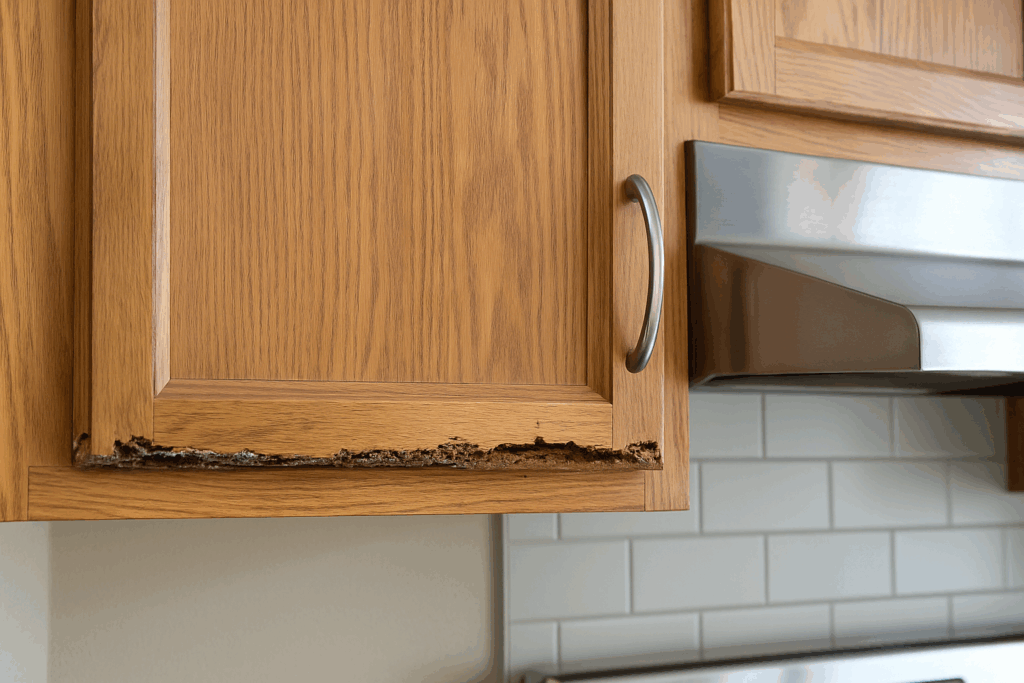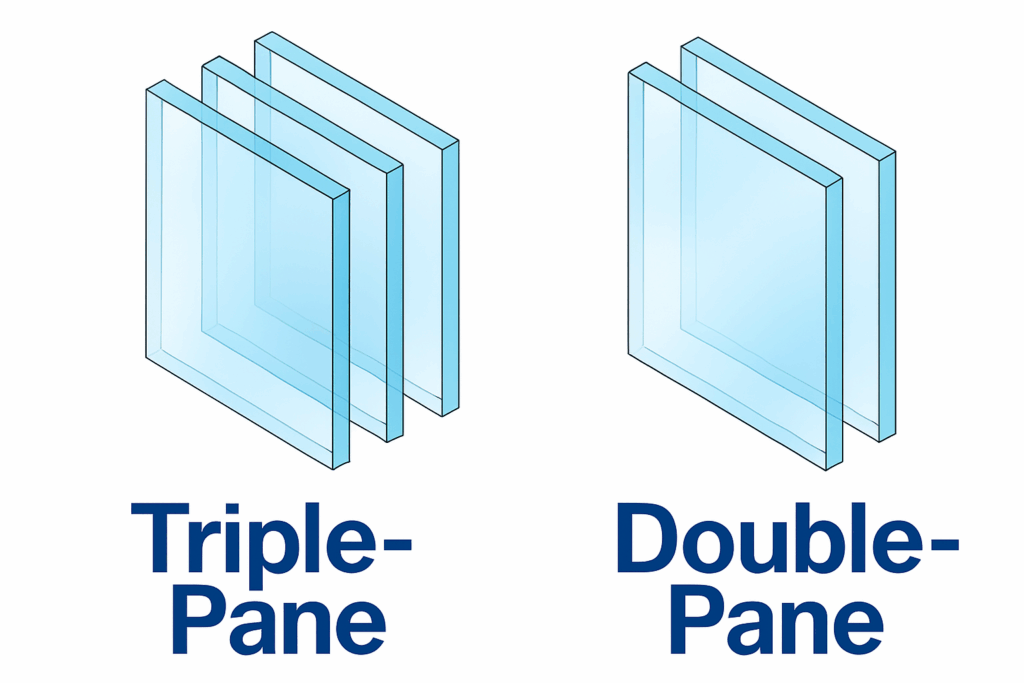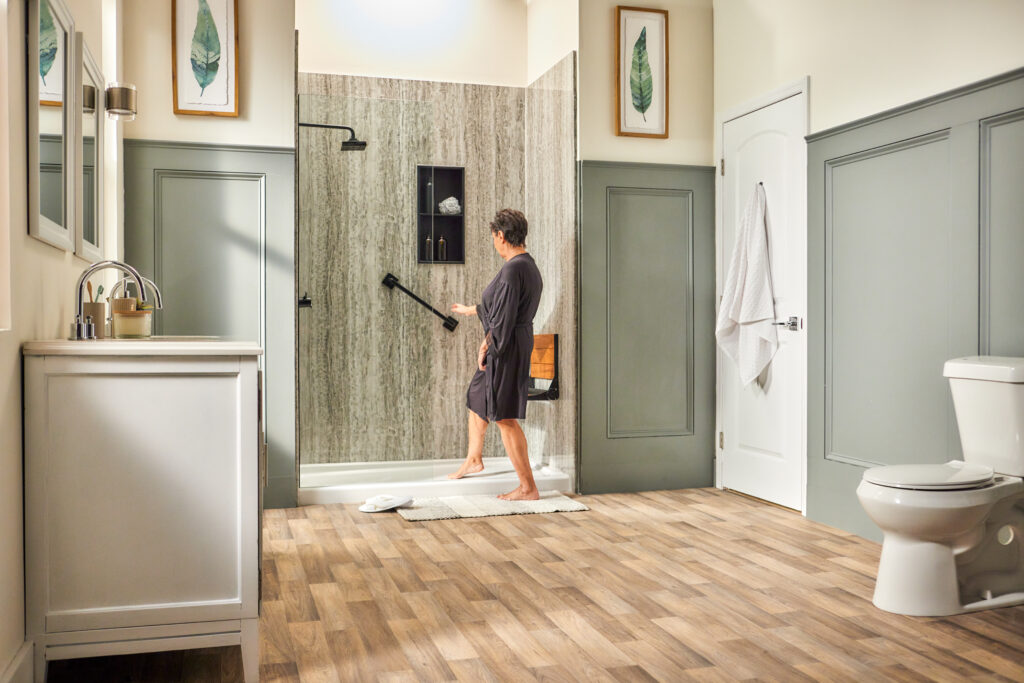
Refacing kitchen cabinets can seem like an attractive way to refresh your kitchen without the cost of a full remodel. However, do-it-yourself kitchen cabinet refacing often comes with challenges that many homeowners underestimate. From uneven finishes to misaligned doors and peeling veneers, a small mistake can turn into a costly repair.
Before committing to DIY, it’s important to weigh the potential problems against the benefits and consider when working with professionals might save you time, money, and frustration.
What Cabinet Refacing Actually Involves
Cabinet refacing isn’t just about replacing doors and drawer fronts. It requires a precise process that combines accurate measurements, surface preparation, and high-quality installation techniques. Most refacing projects involve:
- Removing old doors and drawer fronts without damaging the existing frames.
- Applying new veneers or laminates to exposed cabinet boxes.
- Installing new hinges, doors, and hardware to align perfectly with refaced frames.
- Finishing edges and seams to ensure a smooth, cohesive look.
While it sounds straightforward, executing these steps properly requires specialized tools and expertise. This is where many DIY projects fall short, and redoing work may add significant time and expense to your project.

The Most Common Problems With Refacing Kitchen Cabinets Yourself
Do-it-yourself refacing kitchen cabinets may seem like a money-saving project, but in practice, several pitfalls can compromise results and lead to higher costs later:
1. Inaccurate Measurements
Even a small measurement error can cause big issues. Cabinet doors that don’t align correctly create gaps or overlapping edges, ruining the finished look and function. Professional teams use calibrated tools and proven processes to avoid these common mistakes.
Measurement mistakes are one of the top reasons DIY refacing projects fail. Before you start, review our detailed kitchen cabinet measurement guide. It breaks down step-by-step instructions to capture accurate dimensions, helping you avoid gaps, uneven overlays, and wasted materials.
2. Poor Surface Preparation
Refacing requires meticulous sanding, cleaning, and priming to ensure veneers or laminates adhere properly. Skipping or rushing these steps often results in peeling finishes or bubbling over time, which can make cabinets look worse than before you started. Dust, grease, and residue are common culprits that prevent adhesives from bonding effectively, especially in kitchens where cooking oils collect on surfaces.
Professional refacing teams follow a strict preparation process to create a smooth, clean foundation for new veneers. This includes thoroughly degreasing cabinet boxes, sanding them evenly, and applying the right primers for long-term adhesion.
Without these steps, even high-quality materials are prone to failure. If you’re attempting DIY, invest time in proper prep work and research compatible primers and adhesives to avoid redoing the project later.
3. Mismatched Materials and Finishes
DIY cabinet refacing kits may not always provide materials that seamlessly match your existing cabinet boxes. Subtle differences in color tone, veneer thickness, or surface texture can stand out more than you expect, especially under certain lighting conditions. These inconsistencies often create a disjointed appearance where refaced doors look “tacked on” instead of integrated into the kitchen’s overall design.
Professional cabinet refacing services eliminate this risk by sourcing premium materials custom-fit to your specific cabinets. Teams match veneers, doors, and drawer fronts to ensure uniform thickness, durable finishes, and a cohesive look.
If you choose to go the DIY route, plan to order material samples beforehand and test them in your kitchen’s lighting to ensure everything blends properly before committing.
4. Structural Limitations
Cabinet refacing works best on sturdy, well-built frames. If your cabinet boxes are warped, cracked, or damaged by moisture, applying new veneers may only mask underlying problems without addressing the root cause. Over time, hidden structural issues can cause doors to hang unevenly, drawer slides to misalign, and veneers to separate from unstable frames.
Professionals inspect cabinet integrity before starting any refacing project, ensuring your boxes can support new materials and remain functional long-term. When frames are too weak, they’ll recommend reinforcing or replacing affected sections rather than covering them up. If you’re considering do-it-yourself refacing kitchen cabinets, carefully inspect your boxes first! This is especially important for areas near sinks and dishwashers, where water damage is most common, to avoid investing time and money into cabinets that aren’t built to last.

Is It Worth It to Reface Kitchen Cabinets Yourself?
Before deciding, consider some of the hidden costs of doing it yourself. On the surface, DIY kits seem less expensive, but factor in:
- Material quality: Big-box kits often use thinner veneers or lower-grade laminates.
- Tool costs: Saws, sanders, routers, and clamps quickly add up if you don’t already own them.
- Time commitment: Most DIY cabinet refacing projects take several weekends to complete.
- Risk of rework: Fixing mistakes can negate any initial savings.
For homeowners with carpentry experience and access to the right tools, a DIY project may still be possible. But for most, professional cabinet refacing provides a more durable, seamless, and long-lasting result.
When DIY Cabinet Refacing Might Make Sense
If your cabinet boxes are in excellent condition, you have experience working with woodworking tools, and you’re aiming for a temporary solution before a full kitchen remodel, taking the DIY route may be worth considering.
If you choose this approach, preparation is critical to avoid costly mistakes. Start by thoroughly inspecting the frame integrity, repairing or replacing damaged boxes. Invest in higher-quality materials rather than thin veneers or bargain laminates.
Using the right tools, such as proper saws, clamps, and adhesives, will also make a significant difference in achieving professional-looking results. Additionally, plan for adequate ventilation, since many adhesives and finishes release strong fumes. Finally, work in stages by tackling cabinets in smaller sections to maintain accuracy and consistency throughout the process.

Professional Cabinet Refacing vs. DIY: What to Expect
Partnering with professionals like Statewide Remodeling helps homeowners avoid common problems with refacing kitchen cabinets. Our teams combine expert craftsmanship with premium materials to deliver lasting results, including:
- High-quality veneers and laminates that resist chipping, peeling, and fading.
- Custom-fit doors and drawer fronts designed specifically for your cabinets.
- Precision installation techniques that ensure proper alignment and smooth operation.
- Professional-grade finishes and hardware for a cohesive, modern look.
By investing in professional services, you’re not just improving aesthetics; you’re extending the lifespan of your cabinetry.
Schedule Your Cabinet Refacing Consultation Today
If you’re considering a DIY project but worried about potential pitfalls, Statewide Remodeling can help you achieve the kitchen transformation you want without the stress.
When you work with Statewide Remodeling, you’re choosing a partner with decades of experience in kitchen remodeling. Our team specializes in cabinet refacing services designed to give your kitchen a completely refreshed look without a full replacement. We serve homeowners throughout Texas and beyond, offering solutions tailored to your style, budget, and timeline.
Whether you’re remodeling in Austin or Dallas, Statewide Remodeling brings expert kitchen solutions to homes across Texas and other locations listed in our service area. Our extensive reach means you get localized support backed by national resources.
Contact our team today to schedule a free design consultation or request an estimate and see why so many homeowners trust us for lasting results.



.png)
.png)


